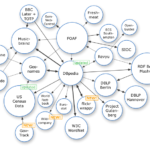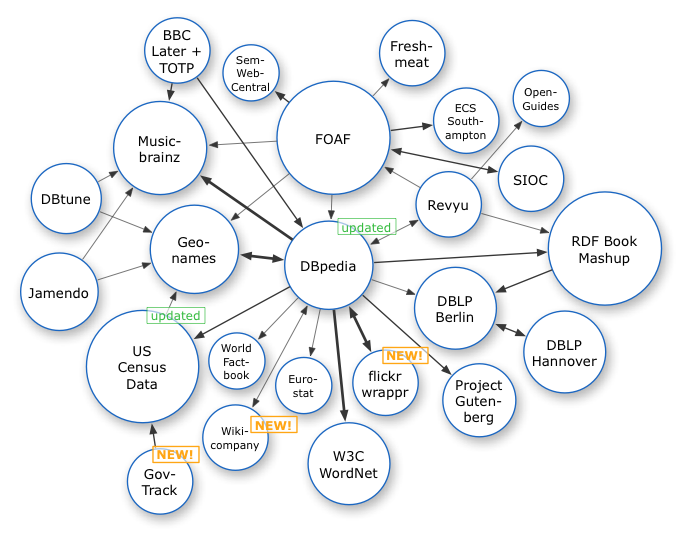Table of Contents
ToggleThis guide outlines key best practices for utilizing Semantic triples in website content to enhance search engine optimization and improve overall visibility. Semantic triples play a crucial role in defining relationships between entities on a website, providing structured data that is easily understood by algorithms. By strategically implementing semantic triples, website owners can significantly impact their search engine rankings and enhance the overall user experience.
Key Takeaways:
- Clearly Define Relationships: Use semantic triples to clearly define relationships between entities on your site, following the subject – predicate – object format for better readability by algorithms.
- Leverage Existing Vocabularies: Utilize existing semantic vocabularies like Schema.org to validate facts, enhance information retrieval for search engines, and improve data consistency.
- Optimize for Search Engines: Implement semantic triples in structured data markup on your pages, create connections to other data sources, and craft SPARQL queries to analyze and optimize key semantic triples for better discoverability and rankings.
Types of Semantic Triples
Some of the key types of Semantic triples that are commonly used in website content include:
| Subject | Predicate |
|---|---|
| Entity | Relationship |
| Person | Occupation |
| Product | Related product |
| Location | Geographical connection |
| Event | Date/time |
Though semantic triples help establish meaningful connections between different entities, it is important to structure them correctly to ensure clear communication of information.
Defining the Subject, Predicate, and Object
Types of semantic relationships, categorized by the subject, predicate, and object, are vital for representing connections accurately in website content. By properly defining the subject, predicate, and object in each triple, the relationships between entities can be effectively communicated to search engines and algorithms.
When creating Semantic triples, it is crucial to accurately identify the subject (the entity), the predicate (the relationship), and the object (the related entity) to provide context and clarity in representing semantic data on your website.
Categories and Examples of Semantic Relationships
On a broader scale, semantic relationships can be categorized into various types based on the nature of the connection. For example, relationships such as authorship, membership, ownership, and location can fall under specific categories within semantic triples.
It is crucial to understand the different categories of semantic relationships and provide relevant examples to accurately structure triples on your website. By incorporating various types of relationships, you can enhance the depth and quality of information presented, leading to improved search engine visibility and user engagement.
Tips for Crafting Effective Semantic Triples
Clearly defining relationships between entities on your website is crucial for enhancing search engine understanding. Utilizing semantic triples in a structured manner can greatly improve the visibility and relevance of your content. When crafting semantic triples, be sure to follow best practices to maximize their impact.
Any errors or ambiguities in your semantic triples can lead to incorrect information being presented to search engines, potentially harming your website’s performance in search results.
Clarity and Specificity
For optimal effectiveness, ensure that your semantic triples are clear, concise, and specific. Ambiguity or vagueness in the relationships conveyed can confuse search engine algorithms and reduce the accuracy of your content’s representation in search results. Providing detailed and specific information through semantic triples enhances the overall semantic context of your website.
For best results, aim for precision in your triples by including only relevant and accurate information. Vague or broad triples can dilute the semantic value of your content and may lead to misinterpretation by search engines.
Aligning Triples with User Intent and Content Relevance
Specificity is key when aligning semantic triples with user intent and content relevance. By accurately capturing the relationships between entities on your website, you can better cater to user search queries and improve the overall user experience. Aligning triples with user intent ensures that your content remains relevant and valuable to your target audience.
For instance, by crafting semantic triples that accurately reflect the relationships between topics and sub-topics, you can create a more cohesive and engaging user experience. This approach not only enhances the semantic structure of your website but also improves its visibility and authority within search results.
Step-by-Step Guide to Implementing Semantic Triples
Keep in mind that implementing semantic triples in website content can greatly enhance the structure and visibility of your data. Here is a step-by-step guide to help you effectively integrate semantic triples into your website.
| Step 1: | Identify Key Entities and Relationships in Content |
| Step 2: | Structure Data with JSON-LD and Schema.org |
Identifying Key Entities and Relationships in Content
On the journey to implementing semantic triples, the first crucial step is to identify the key entities and relationships within your website content. By analyzing your content, you can pinpoint these entities and the connections between them. This process lays the foundation for creating meaningful semantic triples that accurately represent the information on your site.
On examining your content, look for subjects, predicates, and objects that form the core relationships. By clearly defining these elements, you can create structured data that aligns with the semantic web principles, enhancing the search engine’s understanding of your content.
Structuring Data with JSON-LD and Schema.org
Schema.org provides a widely recognized vocabulary for structuring data on the web. By leveraging Schema.org markup and implementing JSON-LD (JavaScript Object Notation for Linked Data), you can make your content more accessible and understandable to search engines. Incorporating these standards ensures that your semantic triples are in a format that search engines can easily interpret, improving the visibility of your site.
Plus, using JSON-LD with Schema.org not only enhances the structuring of your data but also enables you to provide additional context for search engines. This structured approach to data organization enhances the search engine’s ability to index and display your content accurately, leading to improved visibility and relevance in search results.
Factors to Consider When Using Semantic Triples
All websites must carefully consider several factors when utilizing semantic triples to optimize content for search engines and enhance user experience. These factors play a crucial role in the effectiveness of semantic triples in conveying information accurately and efficiently.
Website Structure and Navigation
Triples within the website structure and navigation play a pivotal role in guiding search engines toward understanding the relationships between different entities and the overall context of the content. Ensuring that semantic triples are strategically placed within the website’s architecture can significantly impact the visibility and relevance of the information presented.
Another critical aspect to consider is how users navigate through the website. By incorporating semantic triples within intuitive navigation pathways, users can seamlessly explore related topics and gain a deeper understanding of the content provided. This not only enhances the user experience but also contributes to the overall coherence of the website’s semantic structure.
Content Hierarchy and Interlinking Strategies
Content hierarchy and interlinking strategies are fundamental in establishing a coherent framework for semantic triples to operate effectively. By organizing content according to a clearly defined hierarchy, semantic triples can accurately represent the relationships between entities, topics, and concepts within the website.
This approach strengthens the semantic bonds between different pieces of content and enriches the overall context of the information presented. Additionally, implementing robust interlinking strategies ensures that semantic triples are consistently reinforced throughout the website, enhancing the connectivity and accessibility of related content.
This structured approach to content hierarchy and interlinking strategies fosters a cohesive semantic web that facilitates seamless navigation and information retrieval for both search engines and users. By incorporating these best practices, websites can maximize the potential of semantic triples to enhance discoverability, relevance, and overall user engagement.
The Pros and Cons of Using Semantic Triples
Once again, let’s explore the world of semantic triples and explore the advantages and disadvantages they bring to website content. Below is a breakdown of the pros and cons of utilizing semantic triples in your SEO strategy:
| Pros | Cons |
| Enhanced search visibility | Increased complexity in implementation |
| Improved understanding of content relationships | Potential overhead in maintaining triples |
| Facilitates machine-readable structured data markup | Requires adherence to specific semantic vocabularies |
Enhanced Search Visibility and Rich Snippets
On the bright side, utilizing semantic triples can significantly enhance search visibility for your website. By clearly defining relationships between entities, you make it easier for search engines to understand and index your content. This can lead to improved rankings and the potential for rich snippets in search results, providing users with more information upfront.
Moreover, structured data markup through formats like JSON-LD can help search engines interpret your content better, increasing the chances of your site being featured in knowledge panels or knowledge graphs, further boosting your online visibility and credibility.
Overhead and Complexity in Implementation
Rich with benefits though it may be, implementing semantic triples also comes with overhead and complexity. Ensuring that your triples are correctly structured and maintained can require additional resources and expertise. The need to consistently update and optimize these triples to align with changing content can add a layer of complexity to your SEO strategy.
Implementation of semantic triples may also necessitate adherence to specific semantic vocabularies like Schema.org, potentially limiting the flexibility of your content and requiring a significant investment of time and effort to get it right. It’s imperative to weigh these considerations carefully before diving headfirst into utilizing semantic triples on your website.
Advanced Techniques and Best Practices
To effectively utilize semantic triples in website content, it is vital to investigate into advanced techniques and best practices. By implementing these strategies, you can enhance the visibility and understandability of your data for both users and search engines.
Topic Clustering and Thematic Content Development
With the aim of enhancing the organization and relevance of your website’s content, topic clustering and thematic content development are crucial aspects to consider. By grouping related semantic triples into clusters, you can create a cohesive structure that aligns with user search intent and improves the overall user experience. This approach not only aids in better content organization but also enhances the contextual understanding of your data.
By utilizing semantic triples to connect various sub-topics within your content, you can effectively develop thematic clusters that cater to specific user queries. This targeted approach not only improves the relevance of your content but also boosts its visibility in search engine results, ultimately driving more traffic to your website.
Visualizing and Querying Data with SPARQL
One of the advanced techniques for maximizing the potential of semantic triples is through visualizing and querying data using SPARQL. This query language allows you to retrieve specific information from your semantic data graph, enabling you to analyze relationships, patterns, and potential optimizations. By leveraging SPARQL queries, you can gain valuable insights into your data structure and make informed decisions to enhance its overall effectiveness.
More on Visualizing and Querying Data with SPARQL
Topic clustering and thematic content development play a crucial role in optimizing your website’s content for semantic search. By strategically connecting related semantic triples and organizing them into thematic clusters, you can enhance the overall relevance and visibility of your content. Incorporating SPARQL queries further allows you to analyze and optimize your data structure, ensuring that your website’s semantic triples align with user intent and search engine requirements.
Final Words
Taking this into account, utilizing semantic triples in website content can greatly enhance the visibility and understanding of your data by search engines. By clearly defining relationships between entities, leveraging existing vocabularies, and structuring data in machine-readable formats, you can optimize your content for better search engine performance. Connecting your data to other sources and crafting SPARQL queries to target key triples ensures that your information is easily discoverable and comprehensible by both users and algorithms.
Following these best practices not only improves the overall user experience on your site but also enhances its ranking potential. By implementing semantic triples effectively, you can establish a solid foundation for search engines to grasp the context and relevance of your content, ultimately leading to increased traffic and better search visibility.
Need help? Hire me!
FAQ
Q: What are semantic triples and how are they used in website content?
A: Semantic triples consist of subject-predicate-object relationships that help define entities and their connections. In website content, semantic triples are used to clarify relationships between different pieces of information, making data more understandable to search engines and other algorithms.
Q: What are some best practices for using semantic triples in website content?
A: When utilizing semantic triples in website content, it’s necessary to leverage existing semantic vocabularies like Schema.org to ensure consistency and easier information retrieval for search engines. Implement structured data markup such as JSON-LD to make key facts machine-readable. Additionally, create semantic triples covering related sub-topics to your main content for enhanced topic clustering and search intent matching.
Q: How can semantic triples improve website visibility and search engine rankings?
A: By formatting information in semantic triples and connecting data to other sources through linking, websites can provide better context for search engines, potentially leading to increased visibility. Crafting enough semantic triples and context to populate knowledge panels/graphs can further enhance the visibility of entities on a site, ultimately boosting traffic and rankings.












